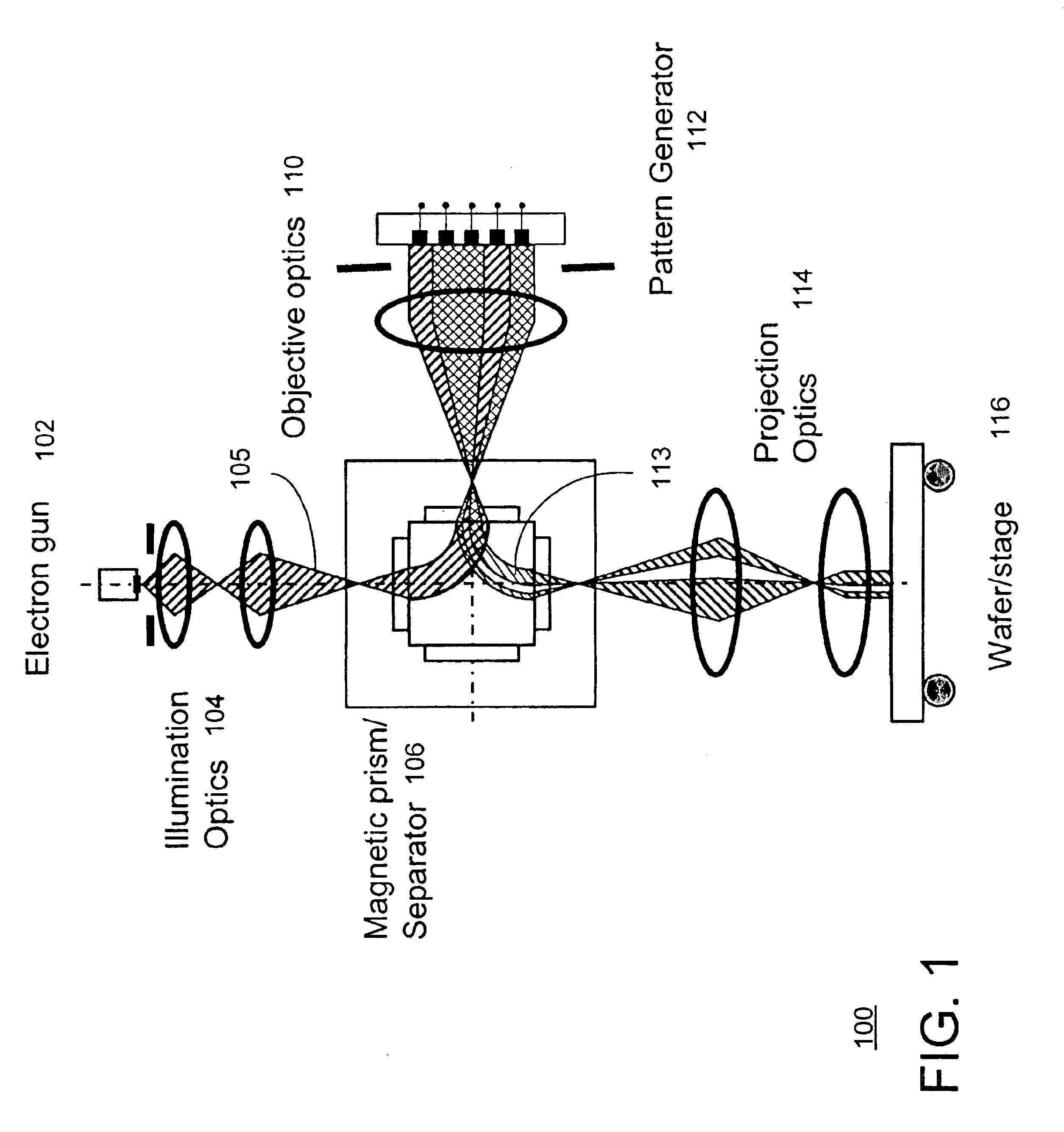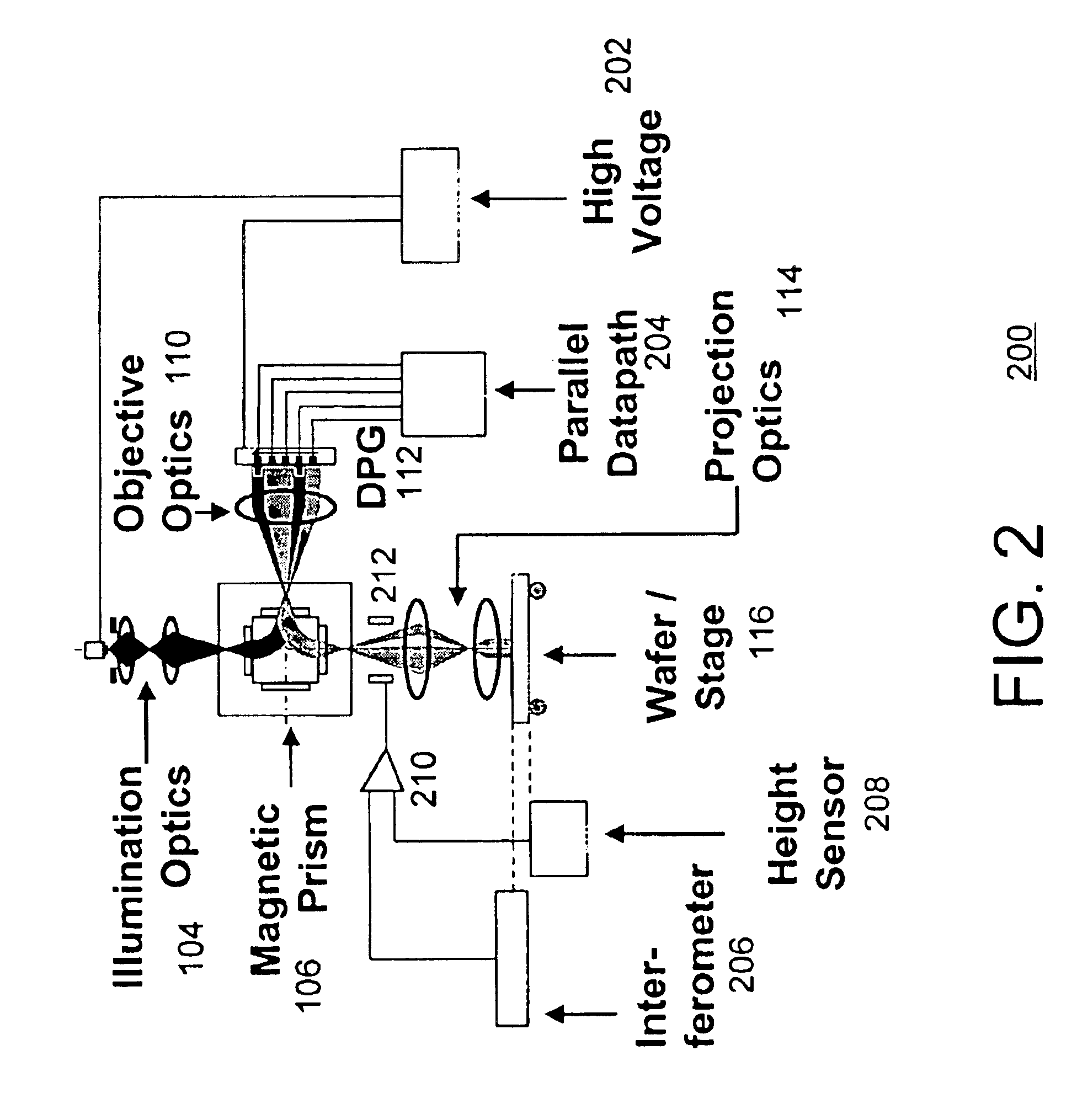Maskless reflection electron beam projection lithography
a technology of electron beam and beam projection, applied in the field of semiconductor manufacturing, can solve the problems of insufficient economic preparation of customer-specific circuits in small numbers, and the process is very time-consuming
- Summary
- Abstract
- Description
- Claims
- Application Information
AI Technical Summary
Problems solved by technology
Method used
Image
Examples
Embodiment Construction
As discussed above, electron-beam direct write (EBDW) lithography has the potential to achieve excellent resolution. However, EBDW has a traditional problem relating to its low throughput. For example, it may take ten to one hundred hours to inscribe an entire wafer using EBDW lithography. One previous approach to attempt to increase the throughput is by increasing the beam current. However, when the current density exceeds a certain threshold, electron-electron interactions cause the beam to blur.
This patent application discloses a system and method of electron beam lithography that overcomes the above-discussed disadvantages and problems. Rather than focusing the electron beam into a tiny spot, the approach described herein floods the wafer with the electron beam. This enables use of a high beam current while keeping the beam current density at a level consistent with minimal electron-electron interactions. For example, an area roughly 0.1 millimeters (mm) wide may be illuminated....
PUM
| Property | Measurement | Unit |
|---|---|---|
| operating voltage | aaaaa | aaaaa |
| size | aaaaa | aaaaa |
| voltage | aaaaa | aaaaa |
Abstract
Description
Claims
Application Information
 Login to View More
Login to View More - R&D
- Intellectual Property
- Life Sciences
- Materials
- Tech Scout
- Unparalleled Data Quality
- Higher Quality Content
- 60% Fewer Hallucinations
Browse by: Latest US Patents, China's latest patents, Technical Efficacy Thesaurus, Application Domain, Technology Topic, Popular Technical Reports.
© 2025 PatSnap. All rights reserved.Legal|Privacy policy|Modern Slavery Act Transparency Statement|Sitemap|About US| Contact US: help@patsnap.com



